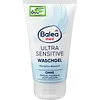What's inside
What's inside
 Benefits
Benefits

 Concerns
Concerns

 Ingredients Side-by-side
Ingredients Side-by-side

Water
Skin ConditioningSodium Laureth Sulfate
CleansingSodium Cocoamphoacetate
CleansingButylene Glycol
HumectantDecyl Glucoside
CleansingSodium Chloride
MaskingSodium Laureth-8 Sulfate
CleansingZinc Coceth Sulfate
CleansingSodium Lauroyl Glutamate
Sodium Methyl Cocoyl Taurate
CleansingSodium Myristoyl Sarcosinate
CleansingCoco-Glucoside
CleansingGlyceryl Oleate
EmollientLactic Acid
BufferingPEG-120 Methyl Glucose Dioleate
EmulsifyingPiroctone Olamine
PreservativeMagnesium Laureth Sulfate
CleansingSodium Oleth Sulfate
CleansingMagnesium Laureth-8 Sulfate
CleansingBenzoic Acid
MaskingCopper Gluconate
Skin ConditioningManganese Gluconate
Skin ConditioningMagnesium Oleth Sulfate
CleansingPhytosphingosine Acetamide
AntimicrobialWater, Sodium Laureth Sulfate, Sodium Cocoamphoacetate, Butylene Glycol, Decyl Glucoside, Sodium Chloride, Sodium Laureth-8 Sulfate, Zinc Coceth Sulfate, Sodium Lauroyl Glutamate, Sodium Methyl Cocoyl Taurate, Sodium Myristoyl Sarcosinate, Coco-Glucoside, Glyceryl Oleate, Lactic Acid, PEG-120 Methyl Glucose Dioleate, Piroctone Olamine, Magnesium Laureth Sulfate, Sodium Oleth Sulfate, Magnesium Laureth-8 Sulfate, Benzoic Acid, Copper Gluconate, Manganese Gluconate, Magnesium Oleth Sulfate, Phytosphingosine Acetamide
 Reviews
Reviews

Ingredients Explained
These ingredients are found in both products.
Ingredients higher up in an ingredient list are typically present in a larger amount.
Decyl Glucoside is a glucose-based surfactant and emulsion stabilizer. It is created by reacting glucose with the fatty acids from plants.
Surfactants help clean the skin by trapping oil, sebum, and dirt to be washed away. As an emulsion stabilizer, it stabilizes the ingredients in a product by preventing them from separating.
This ingredient is biodegradable and non-toxic. This ingredient is commonly found in baby shampoos.
Decyl Glucoside is sometimes used to stabilize the UV filter Tinosorb.
Learn more about Decyl GlucosideChances are, you eat sodium chloride every day. Sodium Chloride is also known as table salt.
This ingredient has many purposes in skincare: thickener, emulsifier, and exfoliator.
You'll most likely find this ingredient in cleansers where it is used to create a gel-like texture. As an emulsifier, it also prevents ingredients from separating.
There is much debate on whether this ingredient is comedogenic. The short answer - comedogenic ratings don't tell the whole story. Learn more about comegodenic ratings here.
The concensus about this ingredient causing acne seems to be divided. Research is needed to understand if this ingredient does cause acne.
Scrubs may use salt as the primary exfoliating ingredient.
Learn more about Sodium ChlorideWater. It's the most common cosmetic ingredient of all. You'll usually see it at the top of ingredient lists, meaning that it makes up the largest part of the product.
So why is it so popular? Water most often acts as a solvent - this means that it helps dissolve other ingredients into the formulation.
You'll also recognize water as that liquid we all need to stay alive. If you see this, drink a glass of water. Stay hydrated!
Learn more about Water